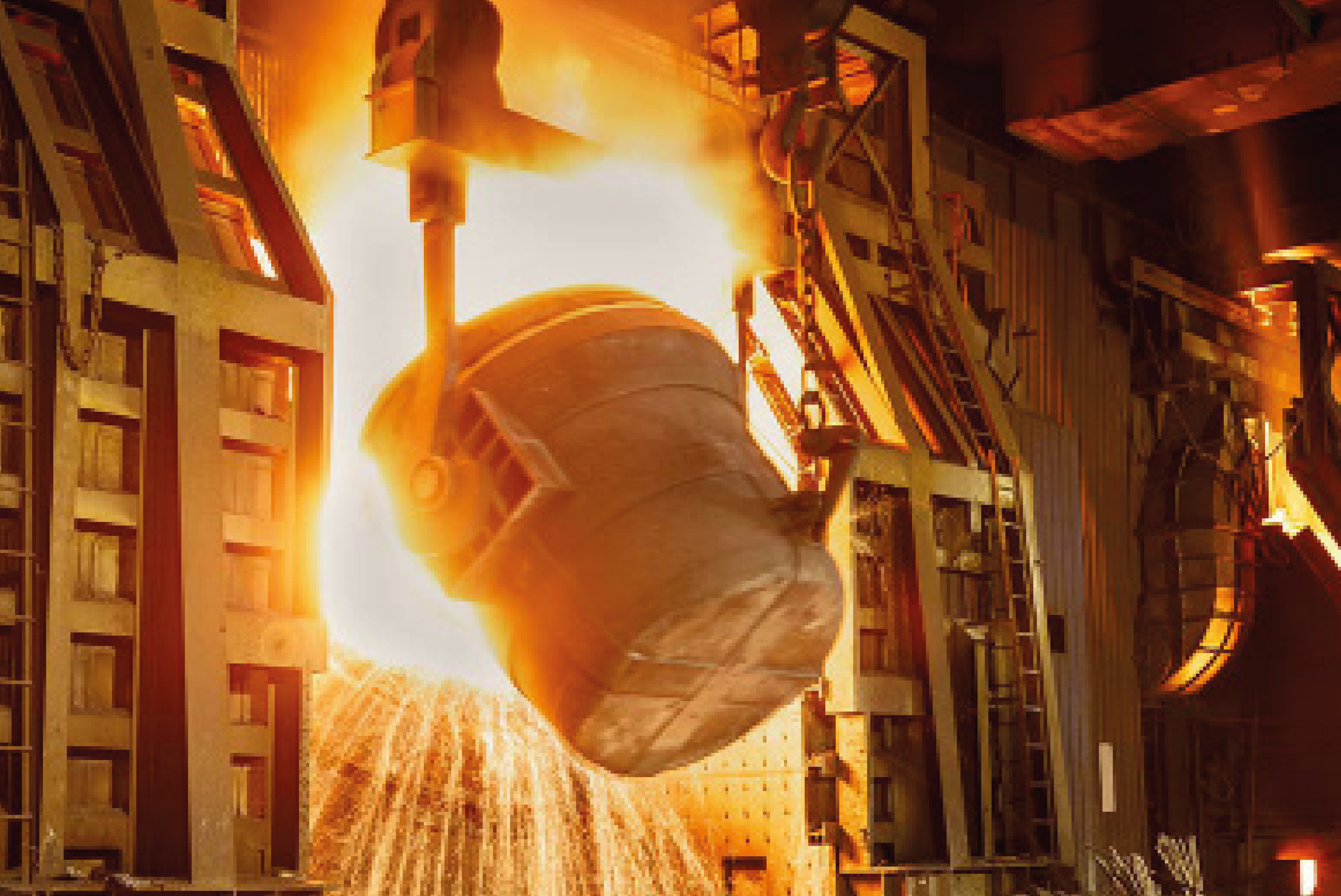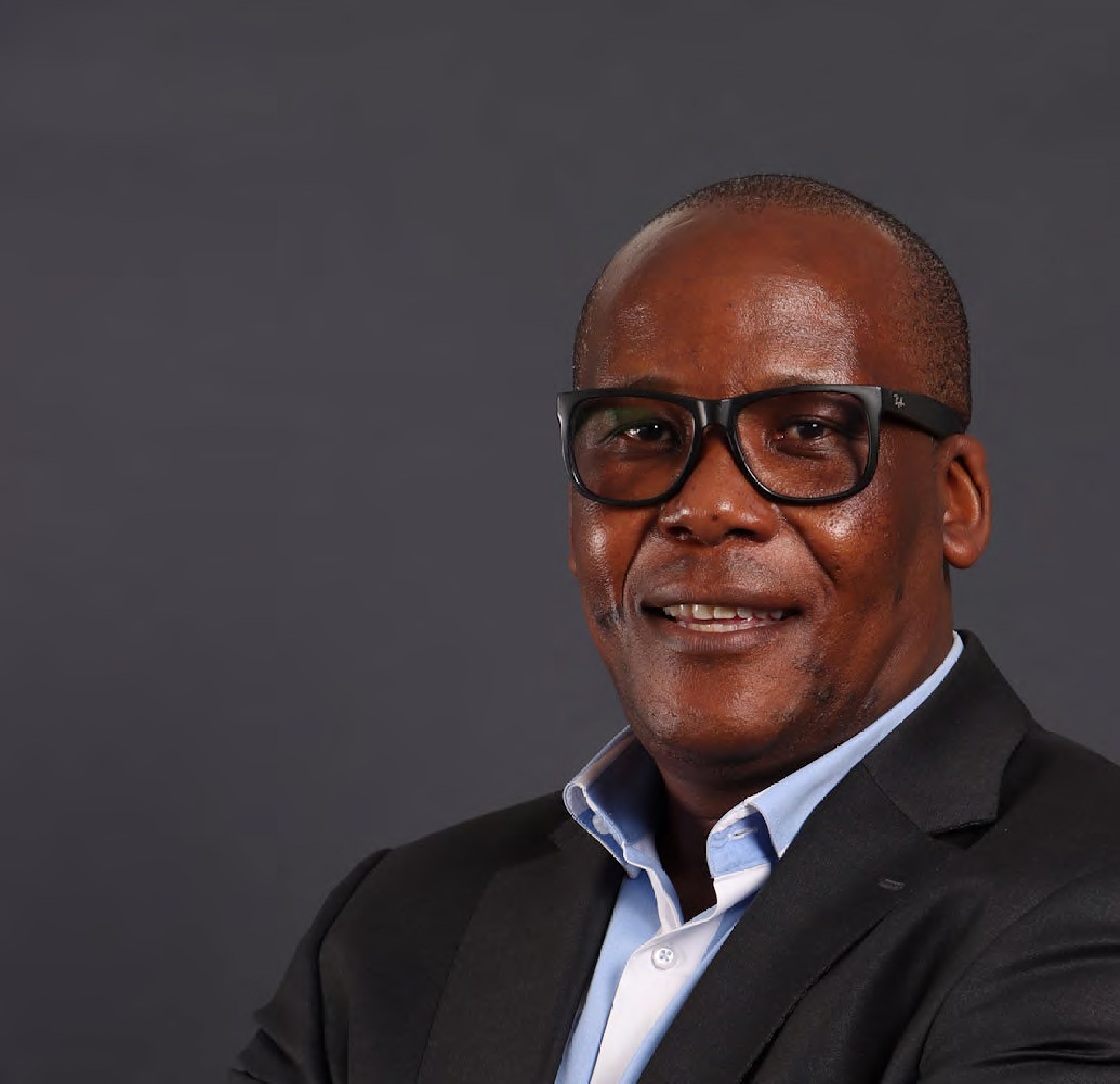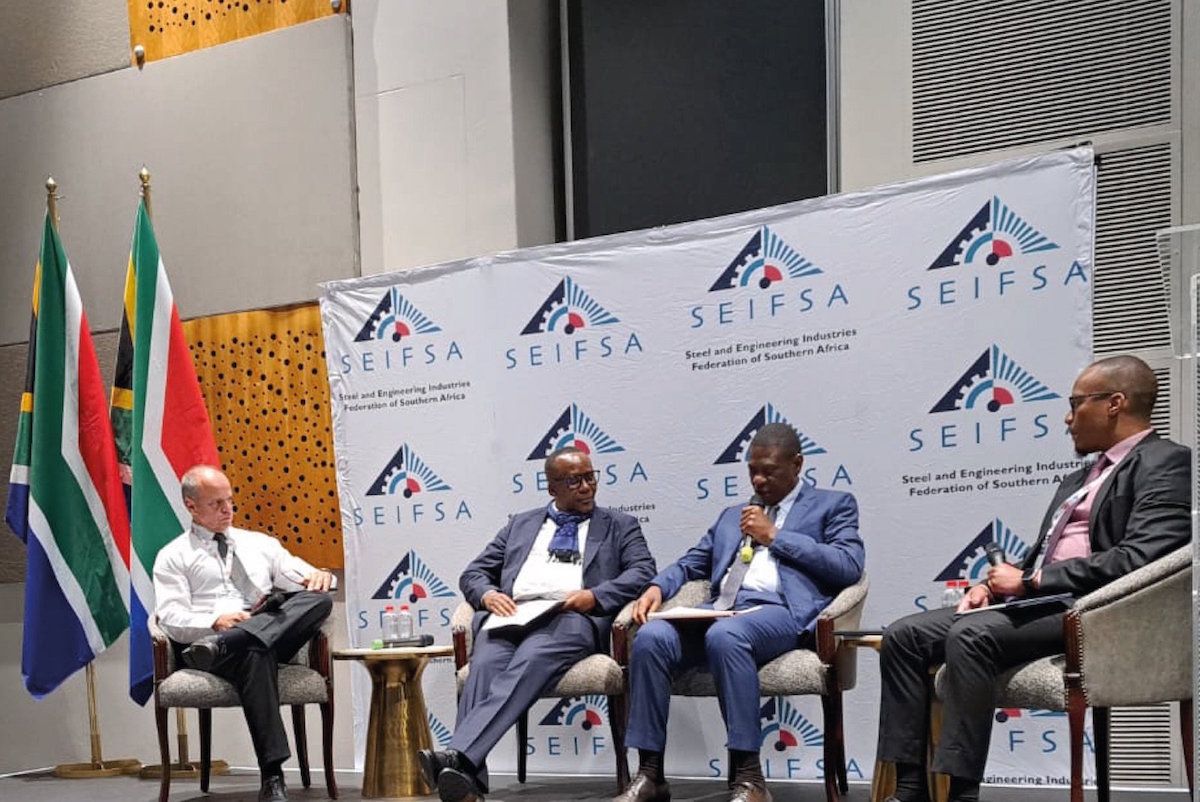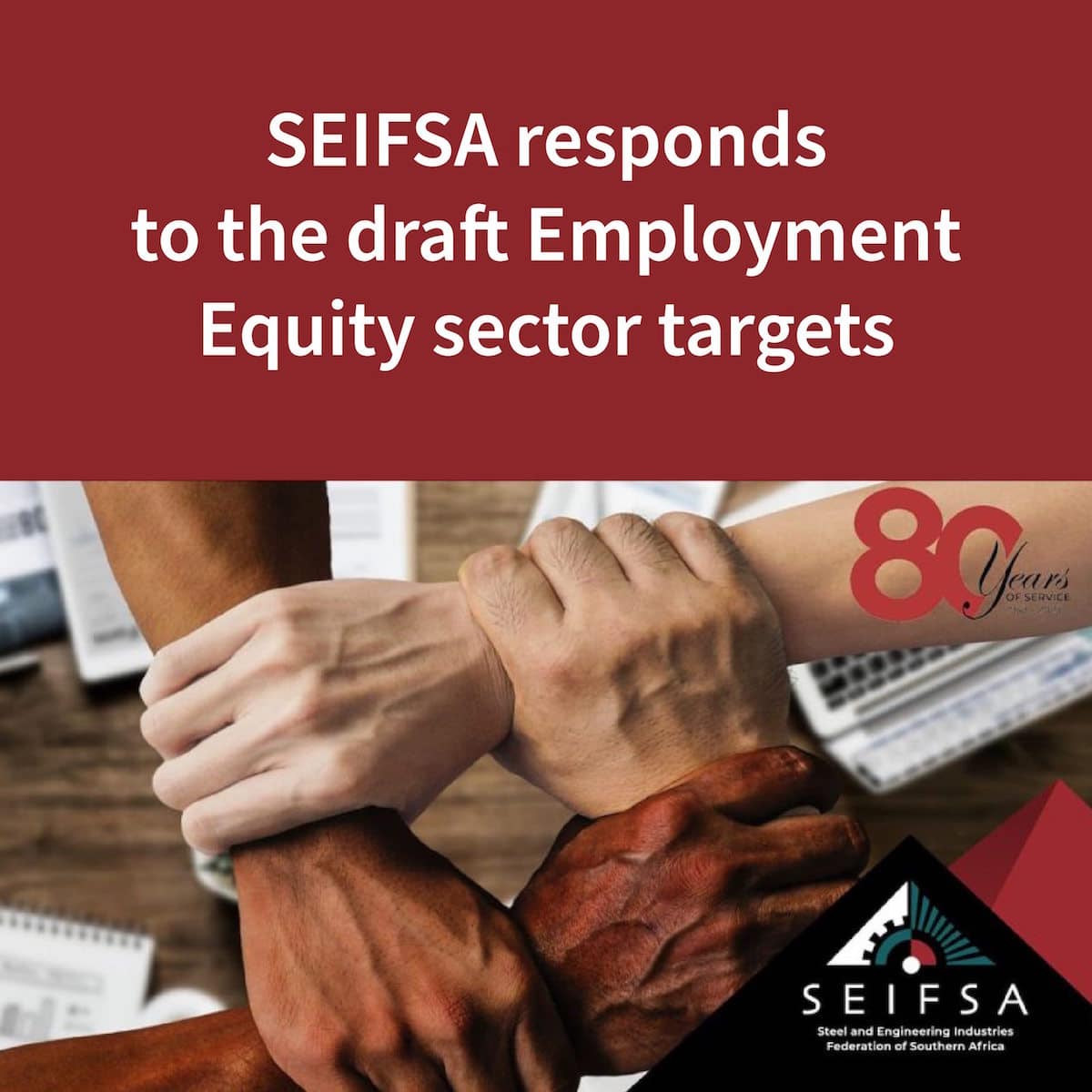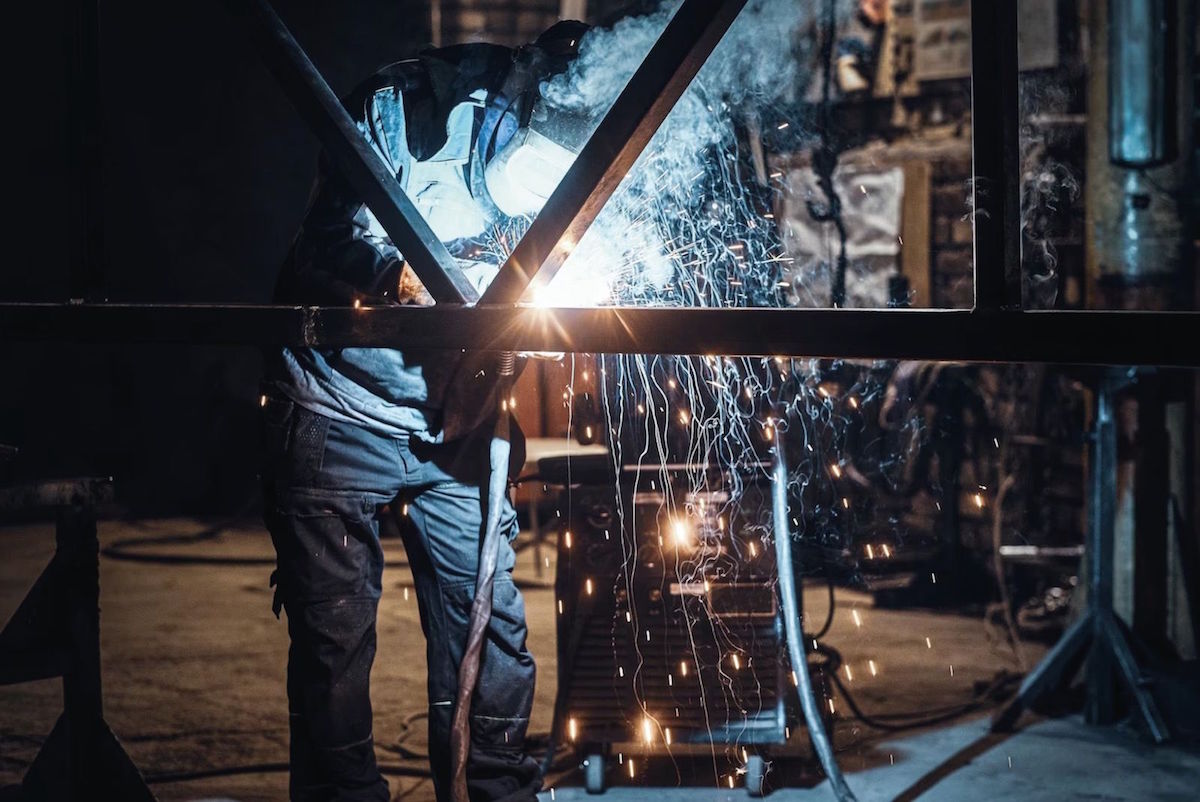Still time to enter SEIFSA’s prestigious Awards for Excellence
9 October 2023Latest News,October 2023
Companies in the Metals and Engineering Sector that are keen to showcase their innovative solutions and gain industry acclaim still have time to enter the SEIFSA Awards for Excellence as entries close on October 20.
The Awards, which are due to take place on November 17, give companies of all sizes an opportunity to step into the spotlight and enhance their reputation among their peers.
“This year the SEIFSA team is committed to clearing the way to make participation easier,” says SEIFSA CEO Lucio Trentini.
The team will work with companies to prepare a draft motivation that highlights each company's unique strengths, contributions and achievements.
“We want as many companies as possible to enjoy the industry acclaim and enhanced reputation that come with taking part in the awards, but we also understand the time pressure most companies are under, so a personalised 30-minute Teams session with SEIFSA Marketing, Sales & Communication Executive will help companies craft the motivation for their entry,” he says.
Along with the kudos of winning or even being nominated for one of the awards on offer, submitting an entry also opens doors to industry recognition as companies showcase their excellence.
“Participating in the awards will elevate your company's brand image and credibility and ensure you are viewed as a trusted and innovative industry expert,” says Trentini.
The nine award categories are as follows:
- Most Digitally Innovative Company
- Best Customer Service Award
- Workplace Health and Safety Award
- Company Artisan Training Award
- Corporate Social Responsibility
- Environmental Stewardship Award
- Young Entrepreneur Award
- Business Woman Award
- BRICS Award
“The SEIFSA Awards for Excellence is your platform to shine and we want to ensure your success, enter the competition and let your excellence be recognised and applauded by the entire industry.”
Lucio Trentini
Chief Executive Officer
SEIFSA is a national federation representing 18 independent employer associations in the metal and engineering industries, with a combined membership of over 1 200 companies employing over 170 000 employees. The federation was formed in 1943 and its member companies range from giant steel-making corporations to micro-enterprises employing fewer than 50 people.
Elias Monage Elected SEIFSA president ahead of a tough and challenging year
ELIAS MONAGE ELECTED SEIFSA PRESIDENT AHEAD OF A TOUGH AND CHALLENGING YEAR
JOHANNESBURG, 6 October 2023 – Industry veteran and industrialist Elias Monage was elected President of the Steel and Engineering Industries Federation of Southern Africa (SEIFSA) at the organisation’s Annual General Meeting (AGM) on Friday.
Executive Chair of Arabela Holdings (Pty) Ltd and Afrika Holdings (Pty) Ltd, Mr Monage assumes the Presidency of the Federation and the Chairmanship of its Board in a crucial year that will see wage negotiations taking place in the metals and engineering sector.
The AGM unanimously confirmed Elias Monage as SEIFSA President, while the Federation’s Vice-Presidents are Nonhlanhla Ngwenya, Managing Director at MphoNo Energies and Board Member at KSB Pumps & Valves (Pty) Ltd and Chief Executive Officer at Atlantis Foundries Pieter du Plessis.
Other Board members are Dynamic Fluid Control (Pty) Ltd Chief Executive Officer Tumi Tshelo, Frigoglass South Africa Human Resources Executive Ryan Haynes, Reinforcing Steel Contractors (Pty) Ltd Director Ernest Volschenk, South African Mint Company Managing Director Honey Mamabolo, Director and Chairman of various companies within and outside the M&E Industry Malcolm Mcculloch, Actom Group Chief Executive Officer Mervyn Naidoo and Invincible Valves (Pty) Ltd Chief Executive Officer Pam du Plessis.
SEIFSA President Elias Monage said the next coming period will be extremely challenging and will require robust leadership to tackle the policy, regulatory and socio-economic environment in order to position the Federation as the apex employer body in the metals and engineering industries.
In acknowledging the challenges currently confronting the South African economy in general and the metals and engineering sector in particular Monage stressed the need for all SEIFSA member Associations and other stakeholders to work together.
He emphasised that notwithstanding that these difficult conditions are likely to prevail for some time, given that there are no signs that the world market is rapidly moving out of its weakness, SEIFSA is ideally positioned to reposition the Federation to greater heights. He furthermore stressed the importance of sharpening the Federations agenda in order to remain relevant in the continent and globally.
While Monage recognised that little can be done to change the global economic headwinds, “the domestic ones — which are frankly own goals of bad policy choices and economic mismanagement — are in the hands of the policymakers. And this is where SEIFSA must continue to play the important role of keeping government accountable”.
SEIFSA Chief Executive Officer Lucio Trentini reiterated the sentiment shared by the AGM that in this Board, the Federation has a team with extensive and vast experience. “I am confident that as we steer the metals and engineering sector through the current crisis and move towards negotiations, this Board will provide the necessary guidance and use its considerable leadership experience to instil confidence.” Trentini said.
SEIFSA is a national federation representing 18 independent employer associations in the metal and engineering industries, with a combined membership of over 1 200 companies employing over 170 000 employees. The federation was formed in 1943 and its member companies range from giant steel-making corporations to micro-enterprises employing fewer than 50 people.
Now would be a good time to join SEIFSA
28 September 2023Latest News,September 2023
The Steel and Engineering Industries Federation of Southern Africa (SEIFSA) proudly celebrates its 80th Anniversary this year and despite the many difficulties and successes experienced by our membership over this period, we remain the most authoritative voice of the metals and engineering sector.
We have been very vocal in articulating the concerns of the sector, both publicly in the media as well as in meetings with various influential stakeholders, including in Government. Whenever Government Departments and other stakeholders are keen to solicit the input of the sector or to hear its views on various matters, they approach SEIFSA.
SEIFSA is a National Employer Federation representing the views of its 18 independent Employer Associations in the metal and engineering industries, with a combined membership of over 1 200 companies employing over 170 000 employees. Through its affiliated Employer Associations, SEIFSA has a presence in the Western Cape, Eastern Cape, KwaZulu-Natal and Gauteng.
As we approach the next round of industry negotiations in 2024, the individual member companies which are members of one of the Employer Associations federated to SEIFSA will once again bear the burden of delivering an agreement that strikes a balance between the interests of both employers and employees in the industry.
SEIFSA is working hard to ensure that next year's negotiations will not be a repeat of what happened in 2021. It is vitally important that the settlement agreement to be reached next year is realistic and informed by the current state of our economy and our sector, preferably without us first having to go through another round of industrial action.
The majority of companies affiliated to our member Associations employ fewer than 50 employees. They will demand a settlement that is affordable and guarantees the survival of the industry.
Your affiliation to SEIFSA, through your Association, not only grants you immediate access to a range of professional product and service offerings, but also gives you a direct line of communication into SEIFSA to insist that any deal that is struck next year is reached with minimum disruption, if any.
As you may recall, the resolution of the strike in 2021 was delayed by the inability of two competitor employer organisations to find common cause with labour. As a consequence, settlement was delayed by three weeks and ironically the SEIFSA membership bore the brunt of the ensuing strike action. The terms of the deal eventually signed by the SEIFSA membership (and the Consolidated Employers Organisation) was no different to what was tabled prior to the strike.
The 2021/2024 deal, drafted by the SEIFSA membership in collaboration with labour contains a number of breakthrough elements that are well worth preserving, namely: granting increases on Rands/ cents; exemption provisions designed to grant relief to struggling employers, a special phase-in dispensation to pay 60% of the 2020 rates by 30 June 2024, a clause providing protection against plant level bargaining and the element of a three year agreement designed to lock-down certainly, stability and industrial peace.
Whilst our competitors aimlessly spend their time in Court in the hope of trying to have the main agreement set-aside, we are hard at work laying the groundwork for what will undoubtedly be an important round of negotiations. Now would be a good time to affiliate to a winning team.
It is important to understand that individual companies do not join SEIFSA directly. SEIFSA is a Federation of affiliated Employer Associations which, in turn represent individual member companies in the various sub-sectors of the industry.
Upon joining an Association federated to SEIFSA, you are deemed to be a member of SEIFSA by affiliation and become entitled to the benefits set-out in the accompanying one-page summary.
If you are not already a member of one of the Associations federated to SEIFSA, now would be a good time to join. Together we are far stronger than individual employers and as a member of one of the Associations federated to SEIFSA, your voice will be heard.
Click here to join an Association affiliated to SEIFSA
Click here to see the benefits of joining SEIFSA
Lucio Trentini
Chief Executive Officer
SEIFSA celebrates 80th anniversary with successful golf day
22 August 2023Latest News,August 2023
The Steel and Engineering Industry Federation of South Africa (SEIFSA) held a successful golf day on Friday, August 18 at the prestigious Glendower Golf Club, with the focus squarely on the Federation's 80th anniversary.
There was a full field of 164 players, all wearing company-branded shirts, with the 18 sponsored watering holes providing golfers and sponsors ample opportunities to network and showcase their businesses.
As part of the 80th celebrations, there was a hole in one prize of R80 000.00 at the 17th hole. The award was not claimed but this did not diminish the enthusiasm of all participants.
First place went to Interroll SA (Pty) Ltd and second place to Marketing2theMax, with Coleus Packaging taking third place as well as the best stand award.
“This is a big year for SEIFSA as we celebrate 80 years of excellence. We appreciate the participation and dedication of our members in another successful day of golf and networking. We enjoyed seeing familiar faces and new acquaintances at this year's event, and look forward to celebrating again at next year's Annual Golf Day,” said SEIFSA CEO Lucio Trentini.
Lucio Trentini
Chief Executive Officer
Industry Wage Increases effective 1 July 2023
4 August 2023Latest News,August 2023
The implementation of industry increases effective 1 July 2023 to 30 June 2024 marks the end of the three-year deal struck in 2021. The three-year deal concluded in 2021 was a watershed agreement that saw the reintroducing of the awarding of increases on rands and cents, an introduction of a special phase-in dispensation, primarily aimed at companies who have been operating outside of the scope of the main agreement since 2010 (although this arrangement is available to all employers in the industry) and finally, the gazettal and extension of the main agreement to all employers and their employees.
Wages Increases
As was the case in 2021 and 2022 wage increase in 2023 are awarded as a rand and cents amount. The rand and cent amounts are calculated on the industry’s minimum gazetted rates of pay and awarded to workers actually rate of pay per hour (e.g., the minimum rate of pay for a Rate A worker is R 93.44, the agreed percentage increase is 5%, this equates to a R 4.67 adjustment, which is awarded to a Rate A worker’s actual hourly rate).
Special Phase-in dispensation
This phase-in dispensation is available, on application, to all employers in the industry and was specifically designed to cater for employers who have were operating outside of the scope of the agreement since 2010 (i.e., the last time the Main Agreement was gazetted). This dispensation sets a target for employers to achieve 60% of the 2020 rate by 30 June 2024. At Rate H this amounts to R 29.73 per hour.
Wage Exemptions
The industry’s current wage exemption procedure continues to apply. Any company which is unable to implement the agreed wage increase, leave enhancement pay obligations and/or any other relief sought from the main agreement, is entitled to lodge an exemption with the Regional Bargaining Council with which the company is registered.
Any company requiring any clarification, information, wage tables etc., on the above is invited to call me direct or email me at lucio@seifsa.co.za
Lucio Trentini
Chief Executive Officer
The Organisation of the future will be Federal
2 August 2023Latest News,August 2023
The Steel and Engineering Industries of Southern Africa (SEIFSA) celebrates its 80th Anniversary this year and despite the many difficulties and successes experienced by our membership over this period, we remain the most authoritative voice of the metals and engineering industry.
We have, and will continue to be vocal in articulating the concerns of the sector, both publicly in the media as well as in meetings with various influential stakeholders, including in Government. Whenever Government Departments and other stakeholders are keen to solicit the input of the sector or hear its views on various matters, they approach SEIFSA.
SEIFSA is a National Employer Federation representing the views of its 18 independent Employer Associations in the metal and engineering industries, with a combined membership of over a 1000 companies’ employing over 170 000 employees. Through its affiliated Employer Associations, SEIFSA has a presence in the Western Cape, Eastern Cape, KwaZulu-Natal and Gauteng. Individual companies do not join SEIFSA directly. SEIFSA is a Federation of affiliated Employer Associations which, in turn represent individual member companies in the various sub-sectors of the industry.
I believe organisation of the future will be federal. Federalism is a means of linking independent bodies together in a common cause. In federal organisations there is a centre but not a headquarters. The centre does not direct or command but co-ordinates and operates on the basis of subsidiarity, which means that responsibility and mandating is pushed as far out and down the organisation as possible.
Federal organisations bring their skill, knowledge and wisdom together from around the sector to agree on strategy and aims. They do not issue edicts from the top. Individual members of Associations enjoy access to a range of professional SEIFSA product and services, and have a direct line of communication into SEIFSA to ensure that individual views and concerns are heard.
As we approach the next round of industry negotiations in 2024, individual member companies which are members of one of the Employer Associations federated to SEIFSA will once again bear the responsibility for delivering an agreement that strikes a balance between the interests of both employers and employees in the industry.
Speed, flexibility and transparency of communication will once again feature strongly on how we collectively navigate the process. What matters is that we deliver on time and within mandate. Above all, we must ensure that we are not only seen as doing things right, but more importantly doing right things that matter.
Lucio Trentini
Chief Executive Officer
Deputy President Paul Mashatile meets Metals Industry Top CEOs
19 July 2023Latest News,July 2023
Deputy President Paul Mashatile met the Steel and Engineering Industries Federation of Southern Africa (SEIFSA) Board and Executives as well as the sectors top CEOs at a breakfast roundtable at the Radisson Hotel & Convention Centre at OR Tambo on Friday, 14 July 2023 with the aim of opening the channels of dialogue between the Deputy President’s Office and this strategic sector of the economy.
The event gave CEOs the opportunity to engage government on working together in partnership to removing obstacles to economic growth and job creation. In addresses from the Deputy President Mashatile, SEIFSA CEO Lucio Trentini and Federation President Elias Monage, as well as during an open question-and-answer session, the dominant theme of the event was the dire need for greater collaboration between government and business in removing obstacles to growth and job creation.
Mashatile, who took over as Deputy President in March 2023, stressed the importance of restoring business and investor confidence in the industry, as well as the wider economy. He said government is committed to implementation and to creating strong ties with industry. The breakfast roundtable was the beginning of a process of engagement between the two parties, he said.
Monage said SEIFSA has made real headway in developing an integrated approach to dealing with the country’s many challenges. He emphasised the need for government and business to co-operate in order to properly address issues such as low economic growth, stubborn unemployment and to be open to new collaborative efforts. "We need to be doing things differently to get different results," he said.
In his welcoming address to the roundtable, Trentini said South Africa was not close to meeting its potential, so "there is no time to waste in jumpstarting economic growth.”
“The stark reality is that three decades into our young democracy – the overriding story of the South African economy remains one of a country that is not reaching, let alone fulfilling, its potential in many areas – in short, the country’s current economic growth, job creation prospects and industrial development efforts are less than encouraging,” he said.
This initiative builds on the success of the meeting held with President Ramaphosa on 18 April 2023 where SEIFSA and Government agreed on the need for an urgent collaborative solution-based approach aimed at reigniting economic growth and securing the metals and engineering sectors future sustainability. Immediately following this meeting three priority workstreams were established focusing on demand creation, increasing exports into Africa and skills development.
The meeting with the Deputy President, as the leader of Government-Business relations, is aimed at strengthening and deepening this collaborative partnership and facilitating movement beyond policy formulation to project implementation.
To read the full government press release click here.
ENDS
SEIFSA responds to the draft Employment Equity sector targets
10 June 20232015-2016-2017-2018,Latest News,June 2023
In response to a call for public comment the Steel and Engineering Industries Federation of Southern Africa (SEIFSA), representing 18 Employer Organisations, who collectively represent in excess of 1 300 companies, employing approximately 173 000 employees, submitted the following.
The metals and engineering sector is an integral part of the global and domestic economy. It constitutes 26% of the manufacturing and contributes 2.6% directly to the country’s gross domestic product (GDP). SEIFSA’s affiliated members in the sector constitute the entire metals value chain from metal production, merchants, metal fabrication, heavy and light engineering. The sub-industries that make up the sector are contained in the table below.
The sector is a crucial supplier of inputs into major sectors such as agriculture, mining, the automotive sector, construction and other manufacturing sub-industries.
The sector is also a strategic avenue through which the country converts its vast mineral endowment to final engineered products, domestically.
| Economic Variable | 2020 | 2021 | 2022 |
| M&E GDP (Rand billion) | R115.7 | R130.6 | R131.1 |
| Share of GDP | 2.5% | 2.6% | 2.5% |
| Capacity Utilisation | 66.6% | 75.5% | 75.8% |
| Employment (number) | 371955 | 371390 | 374496 |
| Total Sales (Rand billion) | R638.5 | R809.4 | R914.2 |
| Export Sales (Rand billion) | R256.1 | R323.5 | R342.9 |
Source: Statistics South Africa, SARS, MIBFA
Despite the potential of the sector, the graphs hereunder are the most effective way of communicating the distress that the sector has experienced over the last 15 years.
Production trends have been on a structural downward trajectory since the 2008/ 2009 global financial crisis, from which the sector has never fully recovered. The sector for all intense and purposes has been in a structural recession since 2008.
As is to be expected, the sector was not spared from the economic disruption of Covid-19. Whilst a sharp recovery has been noted, production levels are still 5% below pre-covid levels.
On the employment front, the sector has lost 205 926 jobs from the 2008 peak of 577 502 to the current employment count of 374 496. As the global economic environment deteriorates, more intense head-winds are anticipated for the sector.
With the official unemployment rate edging above 33% there seems little prospect for improvement in the near future, especially with loadshedding continuing to wreak havoc on our sector and the broader economy as a whole. The electricity crisis, resulting in up to 16 hours of electricity cuts for some industrial areas, eats into everything that powers an economy that has hardly grown for more than a decade. The number of unemployed people should instil a sense of urgency into fixing the economy. Failing that, we run the risk of entrenching the kind of poverty that can upend the social compact that underpins our democracy.
The metals and engineering sector is therefore in structural decline, both in terms of economic performance and employment. This presents a structurally constrained environment, one where opportunities for new employment creation is limited.
In setting the context, we refer to the graph on the previous page. You will note that not only has production in the sector averaged 15% below its 2008/9 peak, but it has also has recorded a multi-year contraction of - 1.3% (CAGR), over this period.
In 2023, SEIFSA estimates that production in the sector could contract by a further 5.3% if the impact of load-shedding is factored in. Moreover, production of the metals and engineering sectors is a function of economic activity and infrastructure spend, both of which have disappointed over the last 10-15 years.
The table below depicts the trends of both variables (GDP and gross fixed capital formation) over these periods. It is evident that the trends are deteriorating when the decade is compared to the 15-year period.
|
Variable |
10 years | 15 years |
| GDP Growth | 1.1% | 1.3% |
| Gross Fixed Capital Formation Total | - 0.9 | 0.8% |
| Gross Fixed Capital Formation General Government | -1.5% | 1.2% |
| Gross Fixed Capital Formation Public Corporations | -5% | 1.8% |
| Gross Fixed Capital Formation Private Sector | 0.2% | 0.6% |
| Construction Sector Activity | - 2.1% | 0.7% |
Source: Statistics South Africa
The above generally explains the resulting trends noted in the metals and engineering sector.
Another important point to highlight is the evident decoupling between production and employment trends. This relationship has continued to widen over the last 15 years. The current estimates indicate that it takes a five percent increase in production to induce a one percent increase in employment. Therefore, the context of declining production as already presented earlier, does not bode well for employment prospects.
SEIFSA’s submission is that in such an environment of structural decline and a limited market that is also shrinking, the sector is unlikely to attract new entrants and the transformation consideration has to be considered through this lens.
The economy is expected to flatline barely above recessionary territory on a medium-term basis, which will undoubtedly lead to the upending of businesses (large, medium and small) and prospects of employment opportunities. The combination of high inflation in a weak demand environment - which has a negative carry-on profit margins - and high interest rates – which are inversely related to new investment – the outlook for the sector is bleak.
The net effects, certainly in the short-medium term, will be that companies will simply be unable to meet the proposed sectoral targets, human capital and skills development will be severally hampered and so will the valuable and positive investments that companies have in community work, supplier development initiatives etc., with companies simply opting to closing shop.
The proposed sectoral targets have come as a surprise as the Amendment Act, although assented to earlier this year, is not yet in effect. The Regulations are therefore premature and, if challenged, may be considered ultra virus.
We are firmly of the view that the Department erred in halting the consultation processes it was busy following with the different Sub-Sectors and Sectors as provided for in the Act and publishing only Sector Targets for the main sectors in an attempt to hopefully achieve implementation of Sector Targets on 1 September 2023. By doing so, it has opened itself up to legal challenges, which will inevitably lead to this implementation date not being achieved and the process that the Department had quite rightly embarked upon, being further halted until the exhaustion of the ensuing legal proceedings.
This will, in all likelihood, result in the implementation of Sector Targets being delayed for far longer than it would have been, had the Department continued with its consultation processes and not tried to fast-track the implementation of Sector Targets on 1 September 2023.
The Department is therefore urged to reconsider this course of action and to firstly conclude the engagements and processes that started with the different Employer Organizations in the different Sectors and Sub-Sectors, before re-issuing Sector Targets.
SEIFSA’s Collective Bargaining Summit to get to grips with labour issues in Metal Industries
2 May 2023Latest News,May 2023
The steel and engineering sector will have a chance to analyse and constructively debate the pros and cons of current collective bargaining practices that have dominated the manner in which employers and trade unions have engaged one another in the sector over the past 60 years at the Metal Industries Collective Bargaining Summit at Emperors Palace on May 24 and 25 2023.
The summit, organised by the Steel and Engineering Industries Federation of Southern Africa (SEIFSA), will see captains of industry, union leaders, senior government ministers and expert analysts discuss the many challenges facing the sector, including crucial debates around conditions of employment and labour costs. Employee costs make up 20% of total costs in the metals and engineering sector.
“A well-functioning economy needs business, labour and government to be in agreement in terms of policy. Our economy has been under enormous pressure since the global financial crisis; we are dealing with crippling youth unemployment, a sub-investment status, stagnant growth and the lingering effects of the Covid-19 pandemic. We hope the summit will plant the seed amongst all stakeholders that in order to begin addressing our many challenges, we need to find a better way of working together,” says SEIFSA CEO Lucio Trentini.
Speakers and panellists across the business, labour and government divide will debate a wide range of issues that underpin the current collective bargaining model, the importance of labour market stability in unlocking economic growth and developing a shared vision on how together we potentially can move forward; topics to be covered include the following:
- Very tough times ahead if we do not turn this ship around — and fast by Dr David Masondo, Deputy Minister of Finance;
- The implications of declining union representation in bargaining councils by Thulas W Nxesi, the Minister of Employment;
- The relevance of the current form of central wage bargaining by Afzul Soobedaar, Director at Perispec Consulting;
- Democratisation of the workplace and the strategic importance of what transformation means in the industry and economy by NUMSA General Secretary Irvin Jim;
- Opportunity for unions to re-emerge as a united force? by Gideon du Plessis, General Secretary of Solidarity; and
- What is the future of trade unions and collective bargaining in a reimagined industrial relations framework? by Jonathan Goldberg, Chief Executive Officer of Global Business Solutions.
Macsteel, RMA and Cachalia Capital have put their weight behind the Metal Industries Collective Bargaining Summit as partners, with Engineering Weekly the Summit’s official media partner.
“If we are to put our economy back on track, it is crucial that decision makers from business, labour and government discuss these issues with a view to addressing the many challenges that face us; the Metal Industries Collective Bargaining Summit offers the opportunity to do this,” says Trentini.
TESD urges members to observe incoming NLMP legislation
2 May 2023Latest News,May 2023
“In my mind we are facing three main disruptors in the labour market that are going to result in the displacement of I think between one and 1.5 million people in the next few months and years.”
These were the words of Joint Chief Executive Officer of Global Business Solutions John Botha at the Temporary Employment Services Division webinar discussing the National Labour Migration Policy.
Botha identified the major disruptors with a particular focus on the intricacies surrounding the pertinent National Labour Migration Policy(NLMP).
The disruptors outlined by Botha were the following:
- The National Labour Migration Policy
- Employment Equity ministerial targets and
- Platform workers
The above mentioned were categorised as a “wonderful opportunity” for employers to build their business in alignment with South African labour law.
In the South African political landscape, foreign nationals are an easy target. Operation Dudula and the national stay away hosted by the Economic Freedom Front on 20 March 2023 illustrated the politicisation of job (in)security and its effects on South Africans. The NLMP is “an attempt by the government to create direction on how to manage the complexities of our economy,” stated Natalie Singer, Executive Consultant and Human Capital Specialist at Global Business Solutions .
Skilled labour shortages in the South African economy have ensured the war on talent continues, but what does that mean for employers and how do they remain compliant with incoming legislation? The NLMP serves as a regulatory measure which extends South Africa’s obligation to uphold standards as a member of the International Labour Organisation(ILO).
As the NLMP is introduced, it affects other facets of national legislation such as the Employment Services Act (of 2014) which must be amended to take it into account. The amendment to the bill is over one year behind schedule, however with the looming election period, it is presumed that it will be prioritised as it serves as a point of political contention.
The priorities of the NLMP are as follows:
- Attracting and retaining skills (in)to the country to meet the economy’s long and short-term goals
- Imposing quotas to limit the number of foreigners
- Prioritising certain sectors in urgent need of critical skills
- Improving conditions for all migrant workers
- Improving the conditions of social protection of migrant workers in South Africa and upon return to their country of origin
- Creating legal labour migration pathways through strong bi- and multilateral partnerships with SADC Member States and beyond
2022 transformation numbers reported that 3-3.5% of the South African labour force consists of foreign nationals. This is with the exception of skilled labour or Artisans who were represented by a percentage of 1.7% foreign nationals.
The Zimbabwean Exemption Permit’s (ZEP) imminent expiration date is something which employers across South African industries must pay close attention to. Meant to expire in April of 2021 the ZEP was extended to 30 June 2023. This grace period is mandated by the Department of Home Affairs as a concession for Zimbabwean foreign nationals to re-apply for their relevant South African visas or return to Zimbabwe.
Although it is illegal for foreign nationals to hold occupations without the relevant legal requirements being met, liability falls on employers to enforce the law within correct due diligence processes.
Employers have very specific obligations, as per the Immigration Act and associated regulations, including and ensuring that:
- Foreign national employees hold a valid passport/ID and visa
- Employment is consistent with the conditions of the employee’s visa
- Home Affairs is notified when a foreign national leaves their employment
- All documentation is retained for at least two (3) years after the foreign national has exited
It is also mandated by the government that employers prioritise hiring South Africans before foreign nationals. The Critical Skills List serves as an indication of skills which are lacking nationally where the government recognises the need to hire foreign nationals, more than in other circumstances.
Some of these roles which speak to TESD members in the technical and engineering sectors are the following:
- Architect
- Civil Engineer
- Geologist
- Industrial Engineer
- Mechanical Engineer
- Metallurgist
- Quantity Surveyor
The Critical Skills List has other concessions which form part and parcel of the list such as tertiary qualifications being in line with the South African Qualifications Authority.
All South African employers are encouraged to audit their employees regularly to remain compliant with South African Labour Law. The fast-approaching expiry of the ZEP will have legal consequences for employers. Businesses must also take note of the Lesotho Exemption Permit expiry in June 2024.

